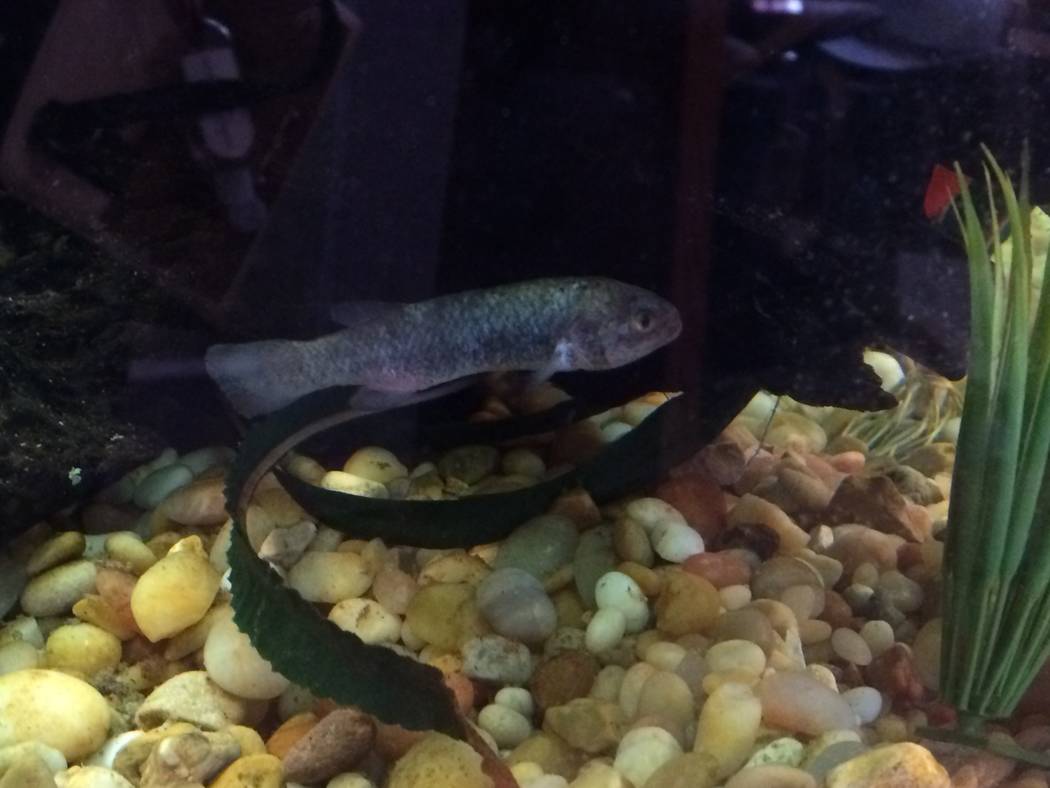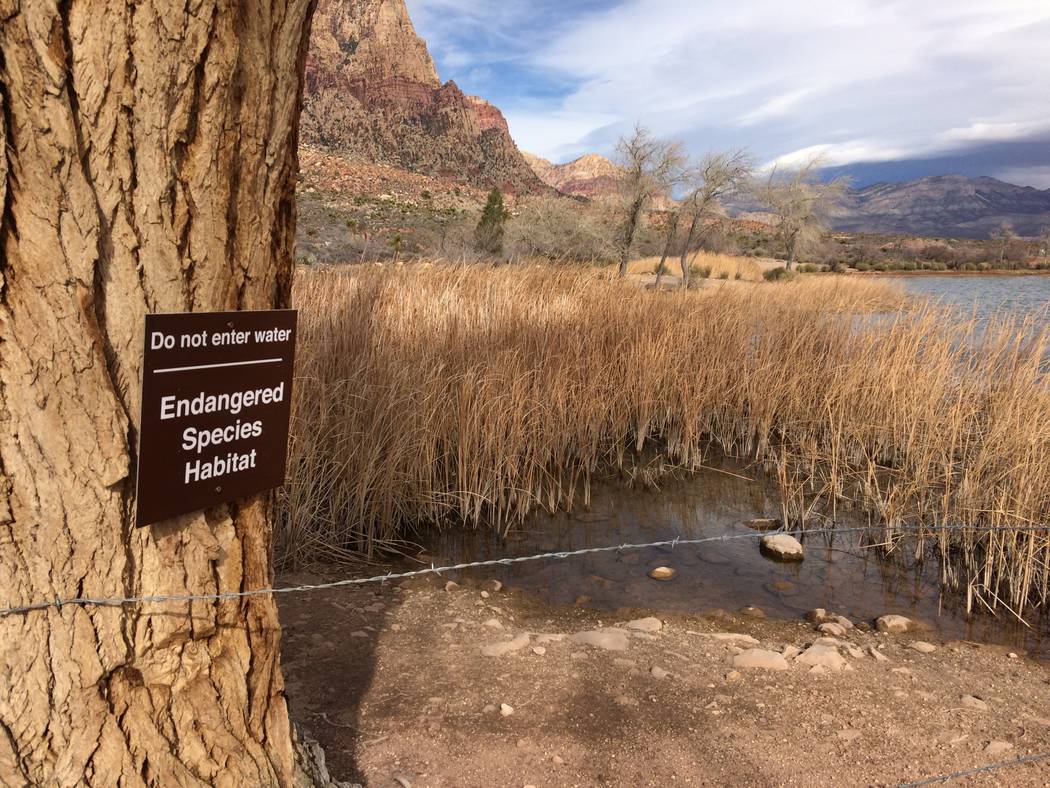Lake drainage at Spring Mountain Ranch park aimed at protecting poolfish
There once were an estimated 20,000 Pahrump poolfish in Lake Harriet at Spring Mountain Ranch State Park. With the count dwindling below 400 and possible extinction looming, the lake is set to be drained this year so the species’ environment can be restored.
The poolfish are being killed by nonnative species that someone released into the lake, park officials say.
The poolfish dates to the Ice Age, and “there are no other even closely related cousins to it anywhere in the world,” said Kevin Guadalupe, native aquatics biologist for the Nevada Department of Wildlife.
Brittany Farmer of northwest Las Vegas brought her daughter Exie, 3, to the lake. They visit three or four times a year “because it’s not like Vegas at all. It’s beautiful and I like to get her out.”
“It’s heartbreaking,” she said of the planned drainage. “I mean, I know it has to be done. I just wish people hadn’t ruined it in the first place.”
The timing for draining the lake depends on when the equipment, which is similar to a fire hose, and a transport truck can be secured. First, the fish will be captured with baited cylindrical mesh traps placed around the lake. Traps have to be marked and monitored for activity because within two hours, crayfish will become aware of the bait, enter the traps and eat the poolfish. Temperature is another concern; poolfish live best in lake temperatures above 75 degrees. If the temperature is below that, they go into a hibernated state, making them more vulnerable to predators.
Once the poolfish are transferred to the Nevada Department of Wildlife’s fish hatchery at the Lake Mead National Recreation Area, the incoming water supply will be diverted. Poison will be used to kill most of the remaining species in the lake, which include koi. Any survivors will die once the water level is at its lowest.
“The sun will pretty much bake everything that’s left,” said Cody Tingey, southern regional manager for Nevada State Parks.
Red swamp crayfish burrow in mud, so the lake will remain empty for about a year to ensure the creatures are killed off.
Pahrump poolfish are 1 to 3 inches, with bright yellow fins. They typically live three to five years.
Crayfish were detected in Lake Harriet in 2012. They and turtle fish are particularly problematic because they prey on poolfish and eat eggs. They also eat the poolfish’s food supply: aquatic insects and algae.
“They’re tough little fish (the poolfish), and they can survive a lot when they are the biggest fish in their pond. But when nonnative species are introduced, they can’t compete,” Guadalaupe said.
Randy Denter has been a park ranger for five years at Spring Mountain Ranch. He said the Department of Wildlife began finding a new threat, mosquito fish, in the lake last year.
“The poolfish will lay their eggs near the surface of the water around the top of the cattail, but then we have the mosquito fish that come in and eat those (eggs),” Denter said. “At first, they appeared in really small numbers, and then this year they just took over. You can see the relationship. When there are zero mosquito fish, the population will be really high for poolfish. But when the mosquito fish population increases, the population of the poolfish decreases.”
Mosquito fish are used in backyard ponds. They’re another nonnative species, Denter said.
“We have people who bring in goldfish and turtles and they (drop them here),” Denter said, shaking his head.
It’s a Class E felony to release aquarium fish into a place where endangered species live.
To reach Summerlin Area View reporter Jan Hogan, email jhogan@viewnews.com or call 702-387-2949.
MORE INFORMATION
To learn more about the Lake Harriet drainage project at Spring Mountain Ranch State Park, call 702-875-4141 or visit parks.nv.gov.
PAHRUMP POOLFISH
The species once was found only in Nye County's Manse Springs, which dried up due to excess groundwater pumping in 1975. Before that happened, the poolfish were moved to new locations: Corn Creek Spring within the Desert National Wildlife Range, north of Las Vegas; Shoshone Springs near Ely; and a reservoir at Spring Mountain Ranch State Park.
In the 1960s, Pahrump poolfish were moved to four others locales: Los Latos Pools within the Lake Mead Recreational Area, Corn Creek, Shoshone Springs and White Pine County.
In 1973, the poolfish was listed under the Endangered Species Act. In 1989, the fish were introduced to Lake Harriet to ensure their survival.
Source: Kevin Guadalupe, Nevada Department of Wildlife

























